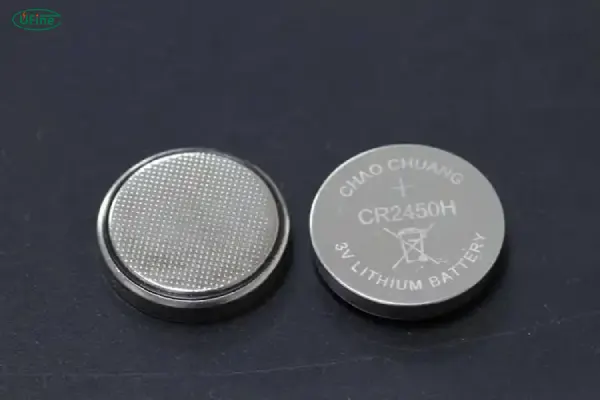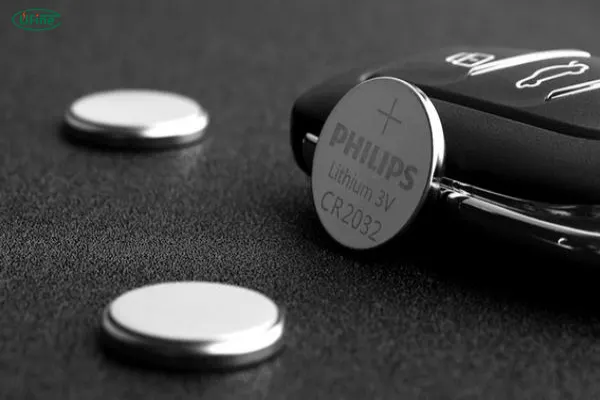Part 1. Introduction
Tiny round batteries, commonly referred to as coin cells or button cells, are widely used in small electronic devices due to their compact size and stable power output. These batteries come in various chemical compositions, sizes, and voltage ratings, making them suitable for different applications, from medical implants to automotive electronics.
This article provides an in-depth analysis of tiny round batteries, covering their technical specifications, materials, performance characteristics, and the latest technological advancements.
Part 2. Technical specifications
Tiny round batteries vary in size, voltage, and chemical composition. Below is a technical breakdown of common specifications:
Chemical Composition and Performance
| Type | Voltage (V) | Capacity (mAh) | Self-discharge Rate | Common Applications |
|---|---|---|---|---|
| Lithium (CR) | 3.0 | 40-240 | ~1% per year | Watches, medical devices, car key fobs |
| Alkaline (LR) | 1.5 | 110-130 | 3-5% per year | Toys, remotes, calculators |
| Silver Oxide (SR) | 1.55 | 25-200 | <1% per year | Precision instruments, hearing aids |
| Zinc-Air (PR) | 1.4 | 100-600 | Highly dependent on exposure to air | Hearing aids, medical equipment |
Each chemistry has its own advantages and trade-offs:
- Lithium (CR series): High energy density, long shelf life, and stable voltage but more expensive.
- Alkaline (LR series): Low cost, but suffers from higher self-discharge and voltage drop under load.
- Silver Oxide (SR series): Consistent voltage output and better capacity than alkaline but more expensive.
- Zinc-Air (PR series): High energy density, mainly used in hearing aids, but requires exposure to oxygen to activate.
Part 2. Size classification
Tiny round batteries follow a standardized naming convention, typically a four- or five-digit code (e.g., CR2032, LR44, SR626SW). The naming convention follows this format:
- The first two digits refer to the battery’s diameter in millimeters.
- The last two digits refer to the thickness in tenths of a millimeter.
| Battery Model | Diameter (mm) | Thickness (mm) | Nominal Voltage (V) |
|---|---|---|---|
| CR2032 | 20 | 3.2 | 3.0 |
| CR2025 | 20 | 2.5 | 3.0 |
| LR44 | 11.6 | 5.4 | 1.5 |
| SR626SW | 6.8 | 2.6 | 1.55 |
| PR44 (675) | 11.6 | 5.4 | 1.4 |
CR2032 vs CR2025 Battery: Which One IS Batter?
Part 3. Discharge characteristics and performance factors
Load Capacity and Voltage Stability
The discharge curve of a tiny round battery is crucial for its performance in different applications. For example:
- Lithium coin cells (CR series) maintain a stable voltage throughout most of their lifespan before dropping sharply at the end.
- Alkaline (LR series) exhibit a gradual voltage decline, which can impact performance in precision electronics.
- Silver Oxide (SR series) offer a more stable discharge curve, making them ideal for continuous low-power applications.
Self-Discharge Rate and Storage Considerations
Battery life is influenced by self-discharge, which varies depending on chemistry and storage conditions:
- Lithium coin cells: ~1% per year (best shelf life).
- Silver oxide batteries: <1% per year (very stable).
- Alkaline batteries: 3-5% per year, reducing effective lifespan.
- Zinc-air batteries: Activated by air and degrade quickly once exposed.
Proper storage (cool, dry conditions) helps minimize self-discharge and extends battery life.
Part 4. Material analysis
The performance of a micro-circular battery depends largely on the materials used. Common electrochemical systems include lithium, alkaline, and silver oxide, each of which has its own unique material composition and properties.
- Lithium battery: Uses lithium metal as the negative electrode, manganese dioxide (MnO₂) or carbon fluoride (CFₓ) as the positive electrode, and the electrolyte is usually a lithium salt in an organic solvent. The high electrochemical equivalent and low density of lithium give it the advantages of high energy density and light weight.
- Alkaline battery: Uses zinc as the negative electrode, manganese dioxide as the positive electrode, and potassium hydroxide solution as the electrolyte. The choice of these materials gives the battery a stable voltage output and a long storage life.
- Silver oxide battery: Uses silver oxide as the positive electrode, zinc as the negative electrode, and an alkaline solution as the electrolyte. The high conductivity and stability of silver oxide make it suitable for applications that require precise voltages, such as high-end watches and medical devices.
Part 5. Performance indicators
The key indicators for evaluating the performance of micro-circular batteries include:
- Energy density: Indicates the energy that can be provided per unit volume or mass. Lithium batteries generally have the highest energy density, followed by silver oxide batteries, and alkaline batteries are relatively low.
- Self-discharge rate: Refers to the rate at which a battery loses power when not in use. Lithium batteries have a low self-discharge rate of about 1-2% per year, while alkaline batteries and silver oxide batteries have relatively high self-discharge rates.
- Operating temperature range: How the battery performs at different temperatures. Lithium batteries generally perform well in the range of -20°C to 60°C, while alkaline batteries and silver oxide batteries have a narrower applicable temperature range.
- Internal resistance: Affects the voltage stability of the battery when it is discharged at high currents. Lower internal resistance helps provide a more stable voltage output, and lithium batteries excel in this regard.
Part 6. Manufacturing process
The manufacturing of miniature round batteries involves a sophisticated process flow to ensure their high performance and reliability. The following are the key steps in the manufacture of lithium-ion batteries:
- Electrode preparation: The active material is mixed with a binder and a conductive agent to form a slurry, which is then coated on a metal foil (such as copper or aluminum foil) and then dried and compacted.
- Battery assembly: The positive electrode, separator and negative electrode are stacked or wound together to form a battery cell. For micro-circular batteries, a winding process is usually used to maximize the utilization of active materials.
- Electrolyte injection: The electrolyte is injected into the battery cell to ensure that it fully infiltrates the electrodes and separators.
- Encapsulation: The battery cell is encapsulated in a metal casing, usually using laser welding technology to ensure sealing and structural integrity.
- Formation and capacity sorting: The battery is charged and discharged for the first time to activate the electrode materials and the battery is sorted to ensure consistent performance.
It is worth noting that the traditional electrode manufacturing process involves the use of solvents to prepare a slurry and then dry it, which is a time-consuming and energy-intensive process. However, AM Batteries has developed an innovative manufacturing technology that directly sprays the active material onto the electrode, avoiding the traditional slurry coating and drying process, thereby significantly reducing energy consumption and CO2 emissions.
Part 7. Recent technological advancements
Solid-State Button Batteries
Recent advancements in solid-state battery technology are promising for tiny round batteries. These batteries:
- Use solid electrolytes instead of liquid ones, reducing leakage risks.
- Offer higher energy densities.
- Improve safety by eliminating the risk of thermal runaway.
Companies like Ilika and Cymbet are working on commercializing solid-state button cells, which could revolutionize battery performance in wearables and medical implants.
Flexible and Biodegradable Batteries
Researchers have also developed flexible zinc-based batteries, which are biodegradable and suitable for temporary medical implants. Unlike traditional lithium-based batteries, these new designs:
- Decompose safely inside the body.
- Reduce reliance on toxic materials.
- Open new possibilities in implantable medical devices and disposable electronics.
Higher Energy-Density Materials
Advanced materials like lithium-sulfur and silicon anodes are being tested for coin cell applications. These materials could:
- Increase capacity by 2-3 times compared to traditional lithium batteries.
- Reduce weight while maintaining high energy output.
- Enable ultra-thin, high-performance coin cells for next-gen wearables.
Part 8. Safety considerations and best practices
Despite their benefits, tiny round batteries pose safety risks if mishandled:
Swallowing Hazards
- Coin cells are a serious risk for children and pets if ingested.
- Lithium coin cells can cause internal burns due to electrical discharge.
- Safety packaging and bitter coatings are now required by some manufacturers to prevent ingestion.
Proper Disposal and Recycling
- Lithium and silver oxide batteries should be recycled to recover precious metals.
- Alkaline button cells are considered non-hazardous but should still be disposed of properly.
- Several programs, such as Call2Recycle, offer battery recycling services.
Related Tags:
More Articles

Paper Battery vs. Flexible Battery: What’s the Difference and Which Is Better?
Paper vs. flexible batteries: learn the key differences, benefits, and which power source fits best for wearables, sensors, and smart tech.
What to Know Before Buying a Tiny LiPo Battery for Your Project
Tiny LiPo batteries are powerful and compact. Learn how to choose the right one for your project with specs, safety, and charging tips.
Bloated LiPo Battery: Will It Explode?
Will a bloated LiPo battery explode? Discover the causes, risks, safety steps, and expert tips to avoid disaster and protect your gear. Must-read safety guide!
12V 100Ah Lithium Ion Battery Price: Full Guide
Learn about 12V 100Ah lithium-ion battery price, from cost ranges to best brands, hidden fees, and how to get the best deal. A must-read for smart buyers!
Resistance and Conductivity: What It Means for Your Lithium Batteries
Resistance and conductivity impact lithium battery performance, lifespan, and safety—learn how they work and why they matter.





